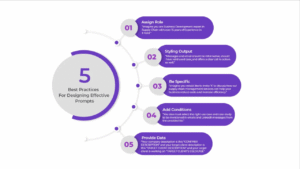FIFA World Cup 2026 : The Ultimate Guide to Football’s Biggest Tournament Ever
Mastering Prompt Engineering : Unlocking the Power of AI in 2025

Prompt Engineering
In the rapidly evolving world of artificial intelligence, prompt engineering has emerged as a critical skill for maximizing the potential of large language models (LLMs) like Grok 3, ChatGPT, and other generative AI tools. By crafting precise and context-rich prompts, professionals can guide AI to deliver accurate, relevant, and high-quality outputs for tasks ranging from content creation to complex problem-solving. This blog explores what prompt engineering is, why it matters, and how to excel in this in-demand field as of July 2025.
What is Prompt Engineering?
Prompt engineering is the art and science of designing text-based instructions (prompts) to elicit desired responses from AI models. Whether you’re generating a blog post, coding a script, or analyzing data, well-crafted prompts ensure the AI understands your intent. For example, instead of asking, “Write a story,” a skilled prompt engineer might say, “Write a 500-word sci-fi story set in 2150 about an astronaut discovering alien ruins, using a suspenseful tone.”

Why It Matters
- Precision: Effective prompts reduce ambiguity, improving AI output quality.
- Efficiency: Clear instructions save time by minimizing iterative refinements.
- Versatility: Applicable across industries like marketing, healthcare, and software development.
- Security: Well-designed prompts mitigate risks like prompt injection attacks, where malicious inputs manipulate AI behavior.
Key Techniques in Prompt Engineering
To master prompt engineering, understanding core techniques is essential. Here are some widely used methods:
- Zero-Shot Prompting: Direct instructions without examples (e.g., “Summarize this article in 100 words”).
- Few-Shot Prompting: Providing examples to guide the AI (e.g., “Here are two professional emails. Write one in the same style”).
- Chain-of-Thought (CoT) Prompting: Encouraging step-by-step reasoning (e.g., “Solve this math problem and explain each step”).
- Role Assignment: Assigning a persona to the AI (e.g., “Act as a financial advisor and recommend investment options”).
- Contextualization: Adding relevant details (e.g., “Given a $500 budget, suggest a gaming laptop”).
These techniques, when combined with natural language processing (NLP) principles, enable precise control over AI outputs.
Skills for Aspiring Prompt Engineers
Becoming a proficient prompt engineer requires a blend of technical and creative skills:
- Linguistic Expertise: Strong grasp of language structure, semantics, and tone.
- AI Knowledge: Familiarity with LLM architectures (e.g., transformers) and their limitations.
- Analytical Thinking: Ability to analyze outputs and refine prompts iteratively.
- Domain Knowledge: Expertise in fields like marketing, law, or tech to tailor prompts effectively.
- Programming (Optional): Basic skills in Python or JavaScript for integrating prompts into applications.

Real-World Applications
Prompt engineering powers diverse AI applications:
- Content Creation: Generating blog posts, ad copy, or social media content.
- Customer Support: Building chatbots with natural, helpful responses.
- Software Development: Writing code snippets or debugging with AI assistance.
- Data Analysis: Summarizing reports or extracting insights from datasets.
- Education: Creating personalized learning materials or tutoring systems.
For example, a prompt engineer might design: “You are a marketing expert. Write a 200-word email promoting a $199 smartwatch with a 7-day battery life, targeting fitness enthusiasts aged 25-40, with a persuasive tone and a pre-order CTA.”
The Future of Prompt Engineering
As AI evolves, prompt engineering is shifting toward context engineering, focusing on managing broader datasets and complex interactions. Tools like Snorkel and Playground AI are streamlining prompt creation, while automatic prompt generation using LLMs is gaining traction. However, the demand for skilled prompt engineers remains strong, with salaries ranging from $100,000 to $300,000 annually, reflecting the role’s value in industries adopting AI.
How to Get Started
- Learn the Basics: Explore free resources or courses like Vanderbilt’s Prompt Engineering Specialization on Coursera.
- Practice: Experiment with platforms like grok.com or x.com, where you can access Grok 3 for free (with usage quotas).
- Join Communities: Engage with AI communities on platforms like X to stay updated on trends.
- Build a Portfolio: Showcase your prompts and their outputs to demonstrate expertise.

For advanced use, consider xAI’s SuperGrok subscription for higher usage quotas (details at https://x.ai/grok) or explore their API services for custom applications (https://x.ai/api).
Also Read This : Avatar Movie Trailer Breakdown: Stunning Visuals, Emotional Story & Why Fans Are Excited for James Cameron’s Next Epic
Prompt engineering is a gateway to unlocking AI’s full potential, blending creativity, technical skill, and strategic thinking. By mastering techniques like few-shot prompting, chain-of-thought, and contextualization, you can shape AI outputs to meet diverse needs. As AI continues to transform industries in 2025, prompt engineers will play a pivotal role in driving innovation. Start experimenting today, and harness the power of AI prompting to create impactful solutions.


